
The Wright brothers, Orville and Wilbur, are renowned as the pioneers of aviation, having successfully achieved the first powered, controlled, and sustained flight in 1903. This marked the birth of aviation, laying the foundation for the development of military aircraft in the early 20th century.
The United States was one of the first nations to field aircraft for military purposes, and this tradition has continued over the past century, paving the way for the development of more advanced and sophisticated warplanes, and culminating in arguably the premier air force on the planet. (And these are the largest air forces in the world.)
To determine America’s first military war plane and other notable early American military aircraft, 24/7 Wall St. reviewed former U.S. military aircraft from Military Factory. Planes are ordered according to the year they entered military service, from the very early planes to 1936, around the time jet propulsion was invented. We included supplemental information from Military Factory regarding types of aircraft, maximum speed, crew size, and what roles each aircraft played in the service.
One of the earliest warplanes employed by the U.S. military was the Curtiss JN-4 “Jenny.” Introduced in 1915, the Jenny became a workhorse for the Army Signal Corps during World War I. Its open cockpit design and wooden frame reflected the early engineering capabilities of the time. The plane played an important role in training aviators and conducting reconnaissance missions during WWI and the Mexican Revolution.
Another iconic warplane making this list is the T-6 Texan, which served as a primary trainer for countless aviators during World War II and beyond. Known for its distinctive appearance, with its characteristic inverted gull wings and sleek lines, the T-6 has been used not only for training but also in various roles, including ground attack and reconnaissance. Even today, modernized versions of the T-6 Texan continue to serve as trainers in air forces around the world, carrying forward its legacy as a key part of aviation history.
The early planes were nowhere near as fast as the modern jets and aircraft in the Air Force today. Part of this huge differential in speed is jet-propulsion technology, which was not tested in flight until late in 1939, well after most of these planes entered service. (Here are the 20 fastest American planes of World War II.)
Most of these early aircraft were also not used as fighters or interceptors like many of today’s military aircraft. Because the technology of that time did not allow for missiles or more sophisticated weaponry, many of these aircraft were used for scouting or reconnaissance to better understand enemy positions.
Here is a look back to the first American warplanes.
1. Burgess-Wright Model F Flyer
> Year entered service: 1911
> Type: Biplane aircraft
> Maximum speed: 42 mph
> Crew size: 1
> Role: Surveillance, reconnaissance, trainer
[in-text-ad]

2. Curtiss JN-4
> Year entered service: 1915
> Type: Biplane aircraft
> Maximum speed: 75 mph
> Crew size: 2
> Role: Trainer

3. Thomas-Morse S-4
> Year entered service: 1917
> Type: Advanced flight trainer biplane
> Maximum speed: 96 mph
> Crew size: 1
> Role: Trainer

4. Standard J
> Year entered service: 1917
> Type: Biplane aircraft
> Maximum speed: 68 mph
> Crew size: 2
> Role: Surveillance, reconnaissance, trainer
[in-text-ad-2]

5. Curtiss H-16
> Year entered service: 1917
> Type: Seaplane
> Maximum speed: 95 mph
> Crew size: 4
> Role: Surveillance & reconnaissance
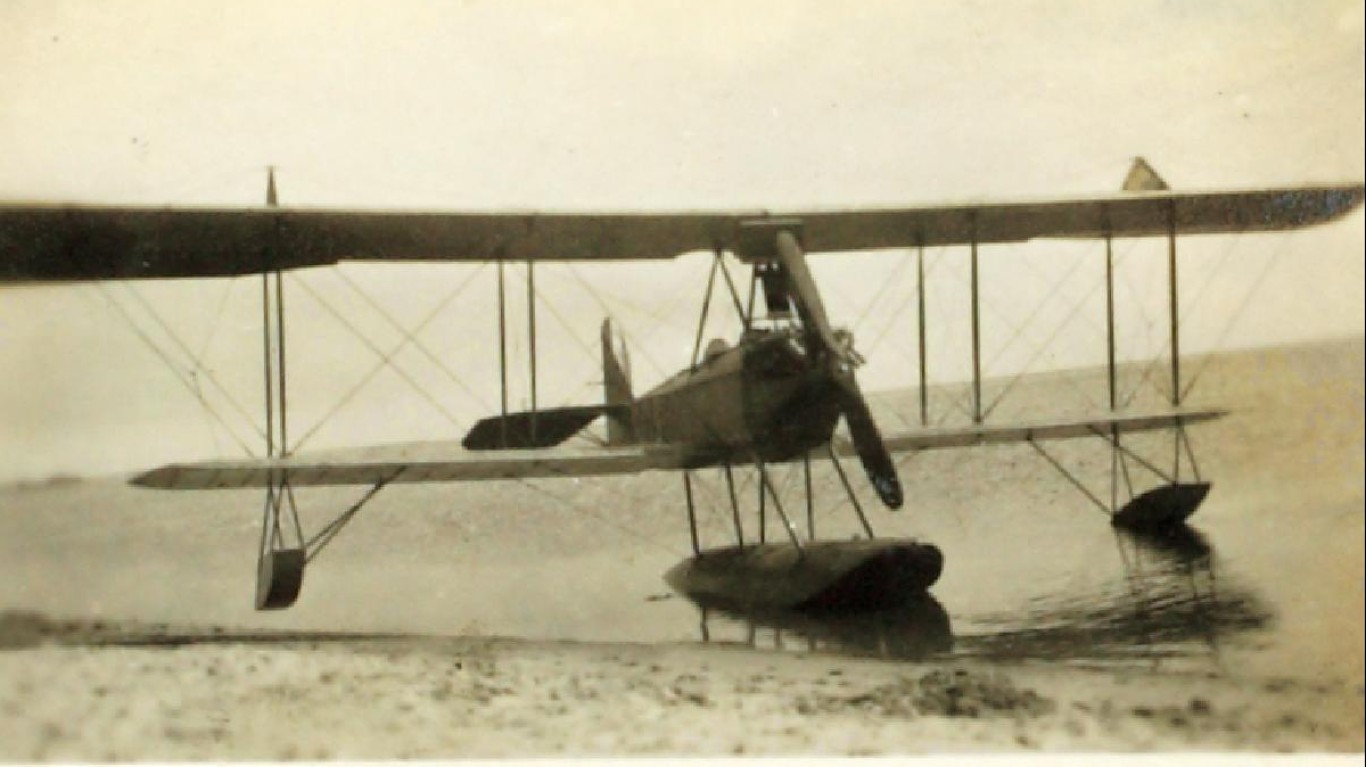
6. Aeromarine 39
> Year entered service: 1917
> Type: Naval biplane aircraft
> Maximum speed: 73 mph
> Crew size: 2
> Role: Trainer
[in-text-ad]

7. Vought VE-7 Bluebird
> Year entered service: 1918
> Type: Biplane fighter aircraft
> Maximum speed: 106 mph
> Crew size: 2
> Role: Fighter, trainer
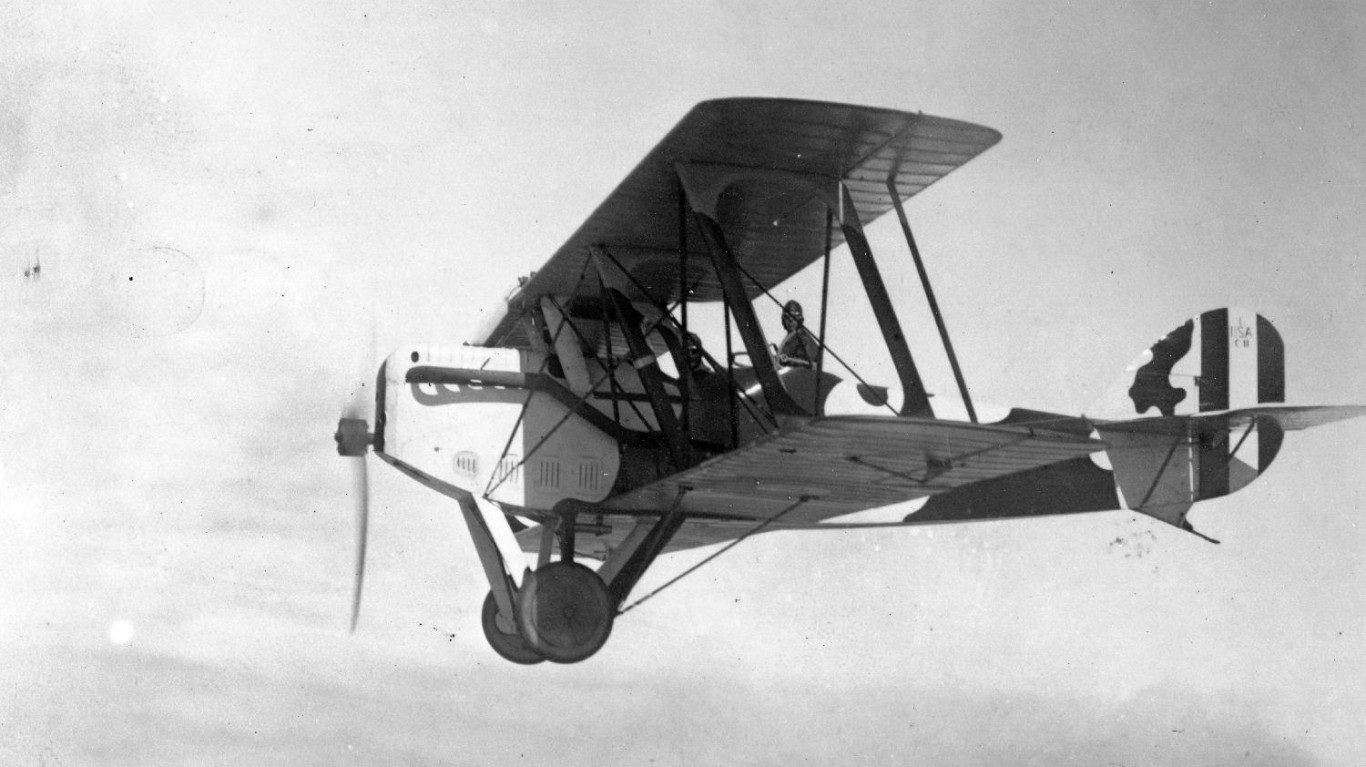
8. Packard-Le Pere LUSAC-11
> Year entered service: 1918
> Type: Biplane fighter aircraft
> Maximum speed: 134 mph
> Crew size: 2
> Role: Fighter, bomber, trainer

9. Martin MB-1 (Glenn Martin Bomber)
> Year entered service: 1918
> Type: Biplane bomber aircraft
> Maximum speed: 104 mph
> Crew size: 4
> Role: Bomber, surveillance, reconnaissance
[in-text-ad-2]
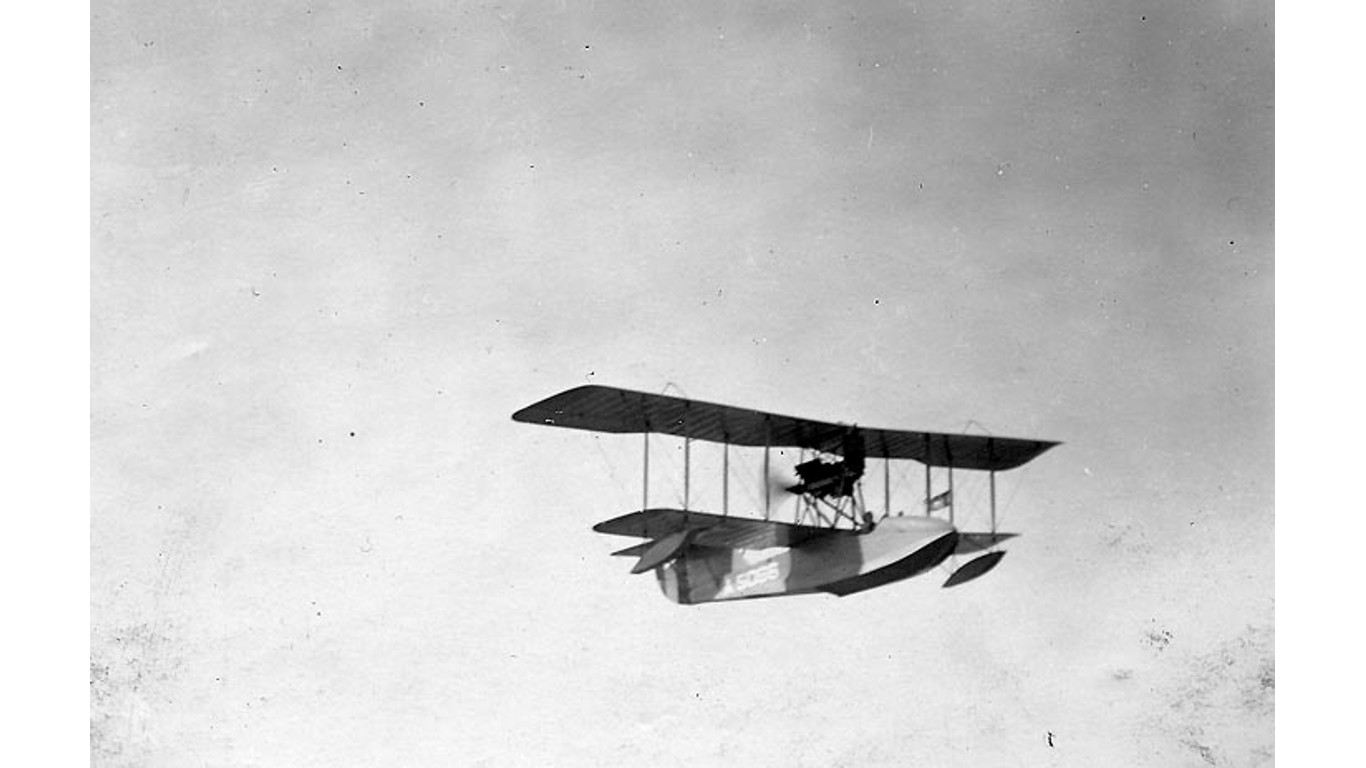
10. Aeromarine 40
> Year entered service: 1918
> Type: Naval biplane aircraft
> Maximum speed: 71 mph
> Crew size: 2
> Role: Trainer

11. Martin MB-2 / NBS-1
> Year entered service: 1920
> Type: Night bomber aircraft
> Maximum speed: 99 mph
> Crew size: 4
> Role: Bomber
[in-text-ad]

12. Curtiss F6C Hawk
> Year entered service: 1924
> Type: Naval carrierborne fighter aircraft
> Maximum speed: 154 mph
> Crew size: 1
> Role: Fighter
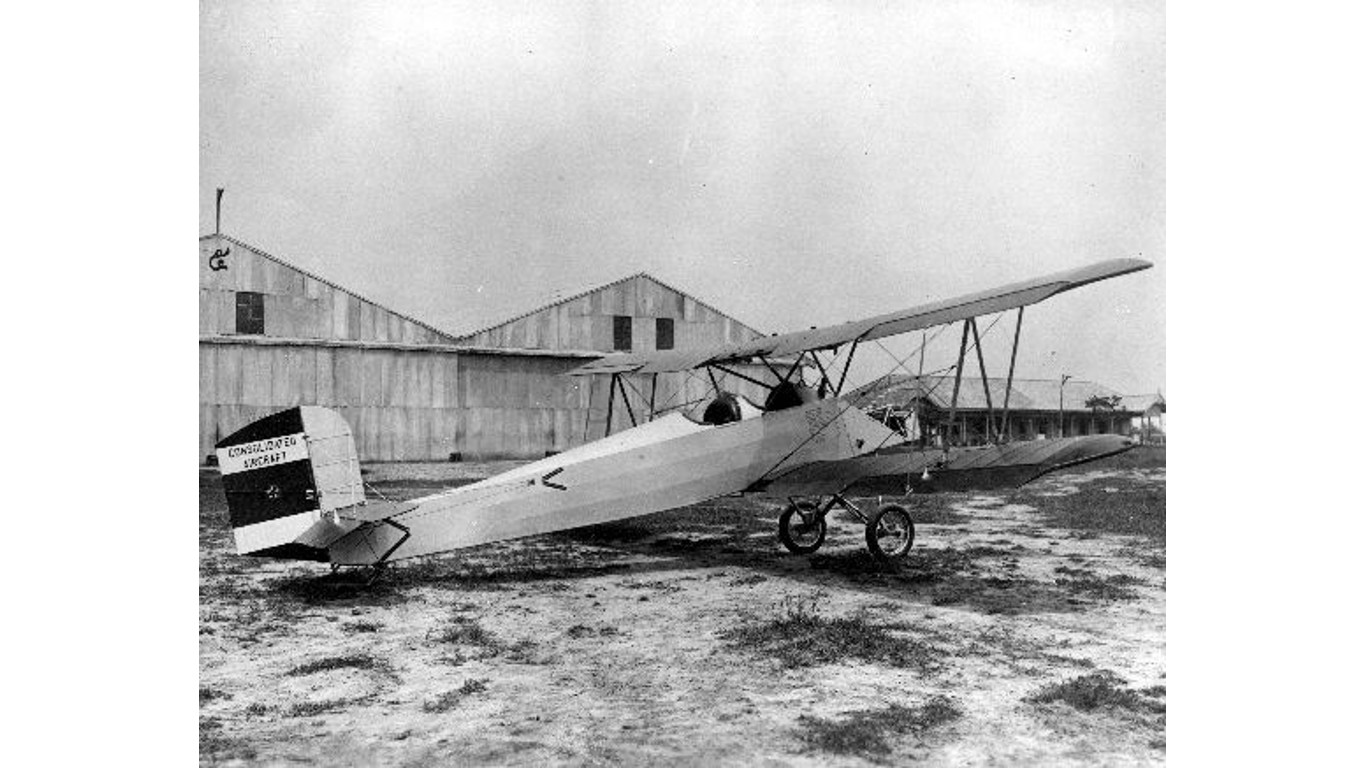
13. Consolidated PT-1 Trusty
> Year entered service: 1924
> Type: Biplane aircraft
> Maximum speed: 92 mph
> Crew size: 2
> Role: Trainer
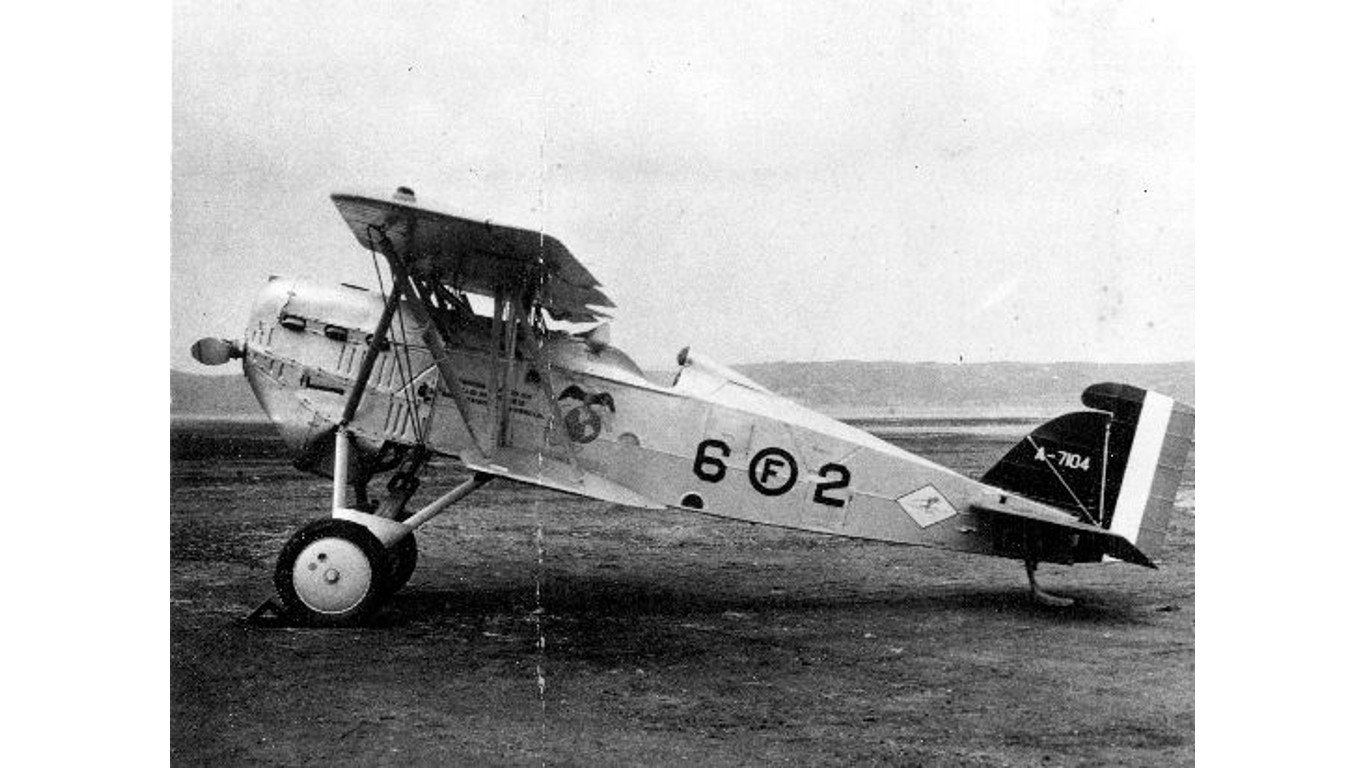
14. Boeing PW-9 (FB-5 / Model 15)
> Year entered service: 1924
> Type: Biplane fighter aircraft
> Maximum speed: 159 mph
> Crew size: 1
> Role: Fighter, interceptor
[in-text-ad-2]

15. Ford Trimotor
> Year entered service: 1926
> Type: Transport aircraft
> Maximum speed: 149 mph
> Crew size: 2
> Role: Transport
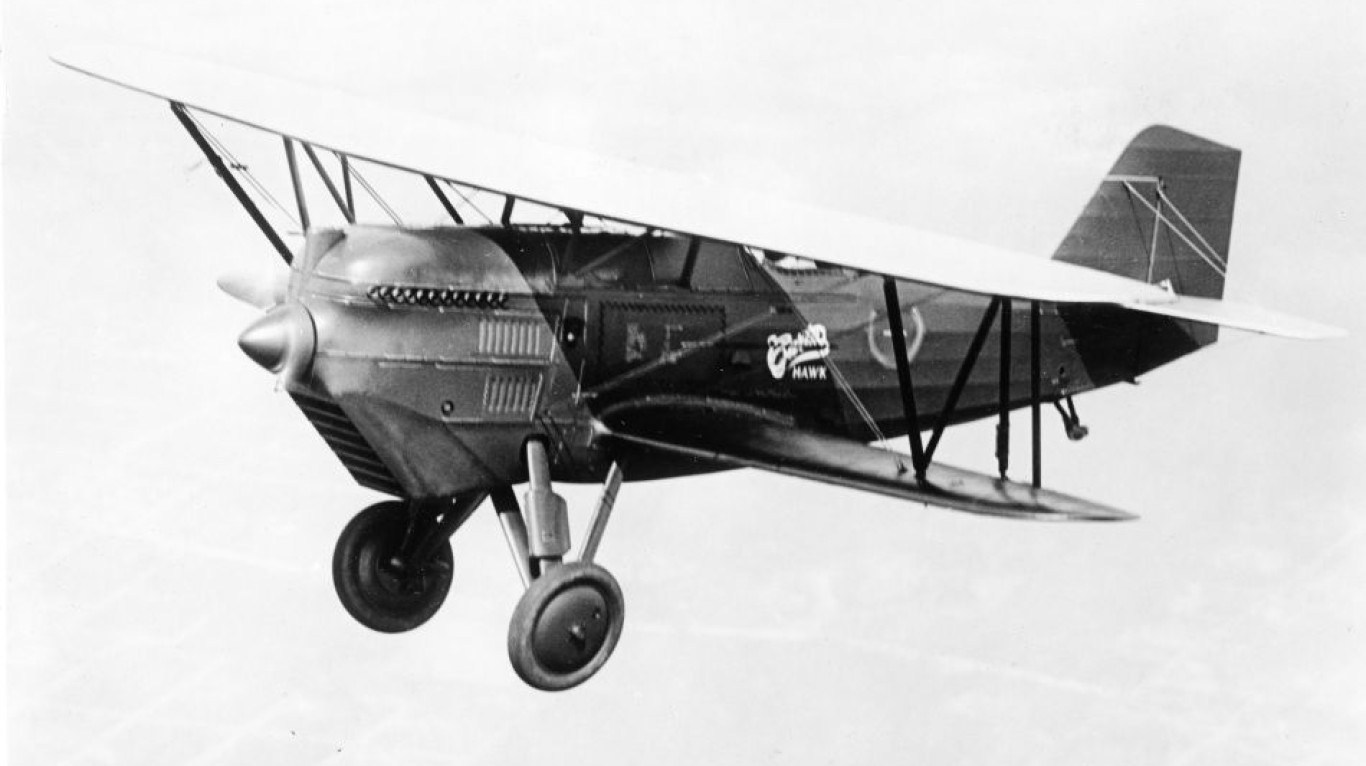
16. Curtiss P-6 Hawk
> Year entered service: 1929
> Type: Biplane fighter aircraft
> Maximum speed: 204 mph
> Crew size: 1
> Role: Fighter
[in-text-ad]

17. Boeing F4B / P-12
> Year entered service: 1929
> Type: Carrierborne biplane fighter aircraft
> Maximum speed: 189 mph
> Crew size: 1
> Role: Fighter, bomber
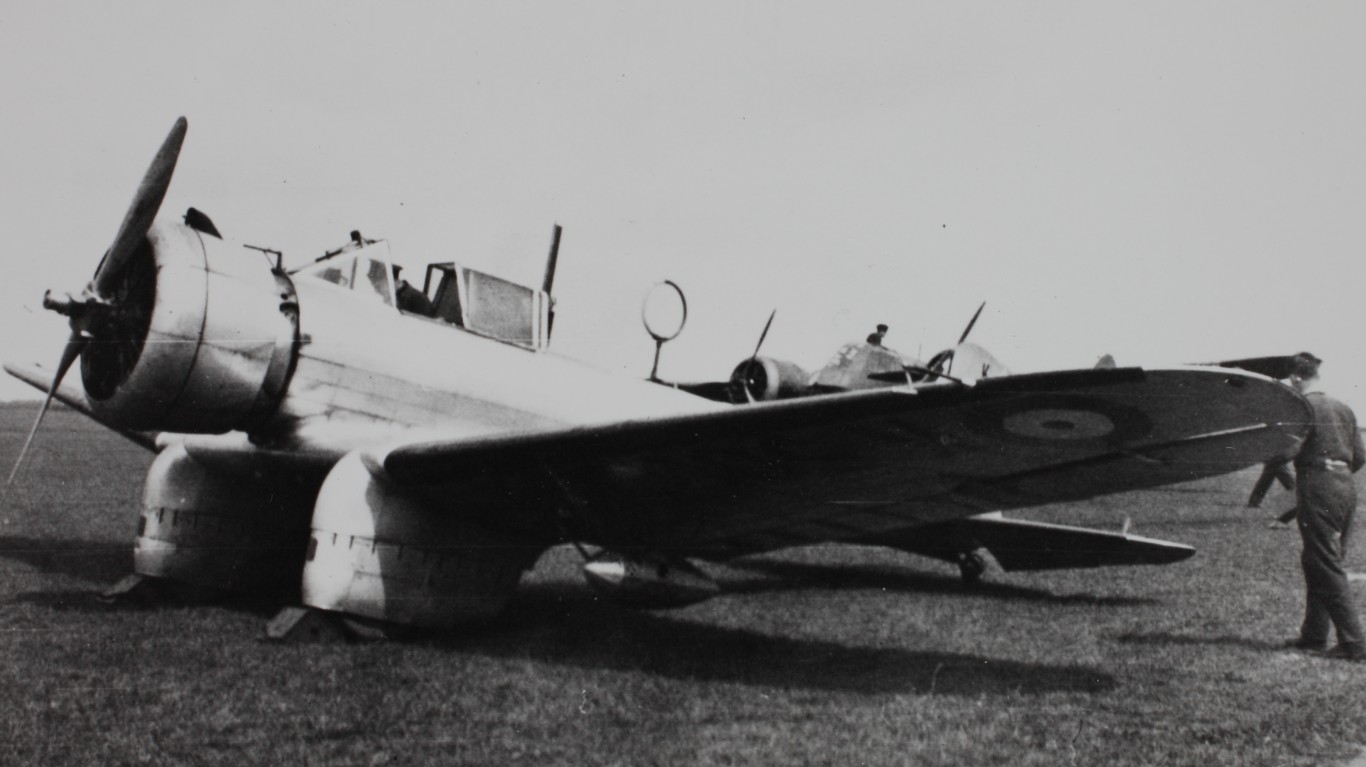
18. Northrop Gamma
> Year entered service: 1932
> Type: Monoplane aircraft
> Maximum speed: 224 mph
> Crew size: 1
> Role: Fighter, transport

19. Martin B-10
> Year entered service: 1932
> Type: Medium bomber
> Maximum speed: 214 mph
> Crew size: 4
> Role: Bomber
[in-text-ad-2]
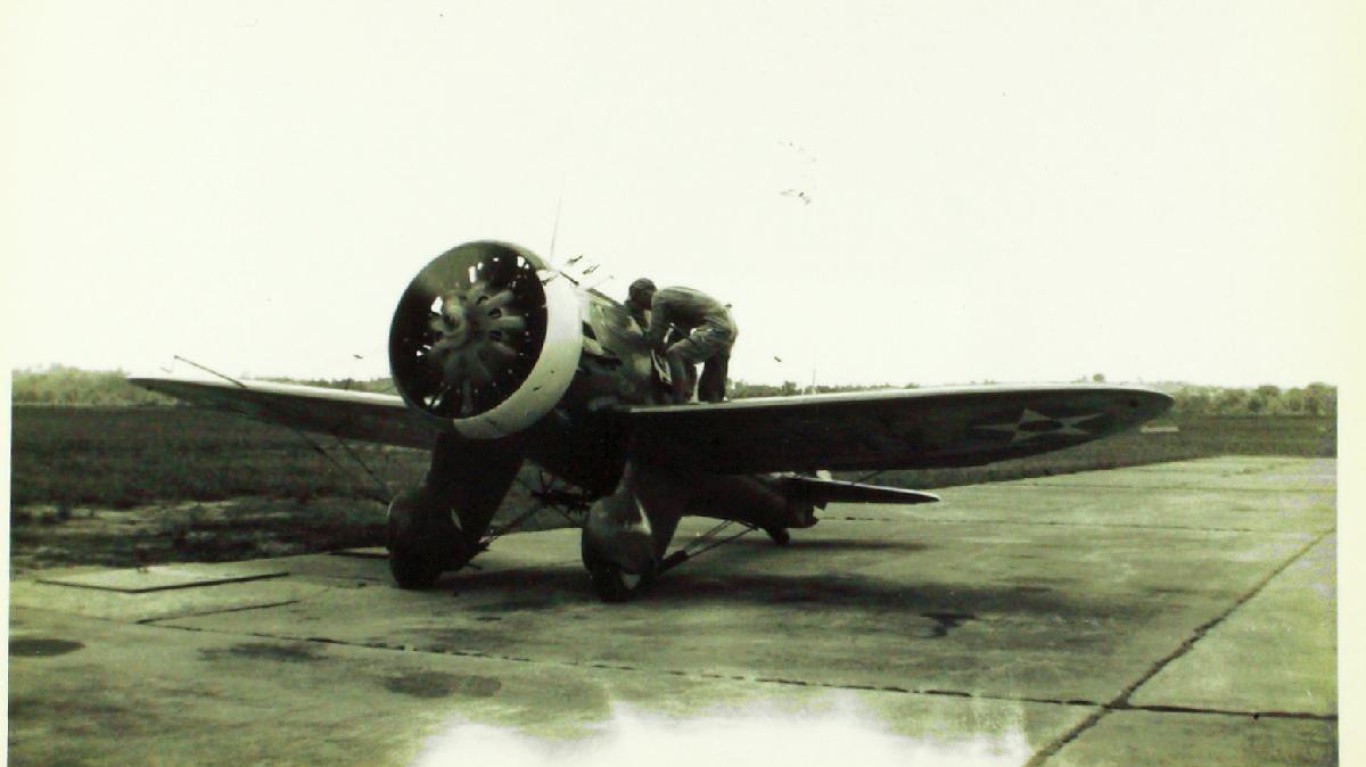
20. Boeing P-26 Peashooter
> Year entered service: 1932
> Type: Monoplane fighter aircraft
> Maximum speed: 227 mph
> Crew size: 1
> Role: Fighter
21. Stinson Reliant
> Year entered service: 1933
> Type: Lightweight liason aircraft
> Maximum speed: 177 mph
> Crew size: 1
> Role: Surveillance, reconnaissance, trainer
[in-text-ad]

22. Grumman FF
> Year entered service: 1933
> Type: Carrierborne biplane fighter aircraft
> Maximum speed: 207 mph
> Crew size: 2
> Role: Fighter

23. Northrop A-17 (Nomad)
> Year entered service: 1935
> Type: Monoplane aircraft
> Maximum speed: 208 mph
> Crew size: 2
> Role: Bomber, surveillance, reconnaissance

24. Grumman F2F
> Year entered service: 1935
> Type: Carrierborne biplane fighter aircraft
> Maximum speed: 238 mph
> Crew size: 1
> Role: Fighter
[in-text-ad-2]

25. Curtiss SOC Seagull
> Year entered service: 1935
> Type: Naval biplane aircraft
> Maximum speed: 165 mph
> Crew size: 2
> Role: Surveillance, reconnaissance, trainer
26. T-6 Texan
> Year entered service: 1936
> Type: Single-engine fighter aircraft
> Maximum speed: 209 mph
> Crew size: 2
> Role: Fighter, close-air-support, trainer
[in-text-ad]
27. Naval Aircraft Factory N3N (Yellow Peril)
> Year entered service: 1936
> Type: Biplane trainer aircraft
> Maximum speed: 127 mph
> Crew size: 2
> Role: Trainer

28. Grumman F3F
> Year entered service: 1936
> Type: Carrierborne biplane fighter aircraft
> Maximum speed: 264 mph
> Crew size: 1
> Role: Fighter
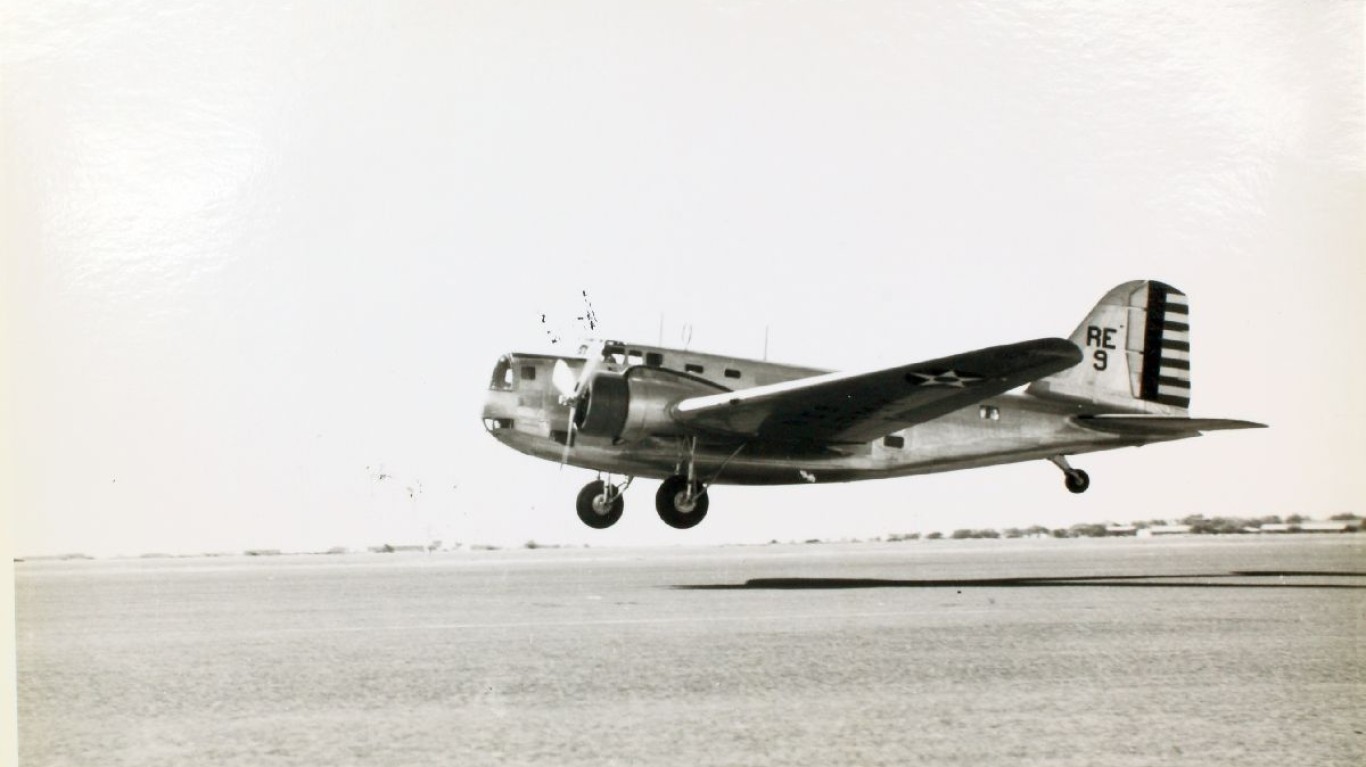
29. Douglas B-18 Bolo
> Year entered service: 1936
> Type: Medium bomber
> Maximum speed: 215 mph
> Crew size: 6
> Role: Bomber, surveillance, reconnaissance, transport
[in-text-ad-2]

30. Douglas DC-3
> Year entered service: 1936
> Type: Military transport
> Maximum speed: 237 mph
> Crew size: 5
> Role: Transport
In 20 Years, I Haven’t Seen A Cash Back Card This Good
After two decades of reviewing financial products I haven’t seen anything like this. Credit card companies are at war, handing out free rewards and benefits to win the best customers.
A good cash back card can be worth thousands of dollars a year in free money, not to mention other perks like travel, insurance, and access to fancy lounges.
Our top pick today pays up to 5% cash back, a $200 bonus on top, and $0 annual fee. Click here to apply before they stop offering rewards this generous.
Flywheel Publishing has partnered with CardRatings for our coverage of credit card products. Flywheel Publishing and CardRatings may receive a commission from card issuers.
Thank you for reading! Have some feedback for us?
Contact the 24/7 Wall St. editorial team.
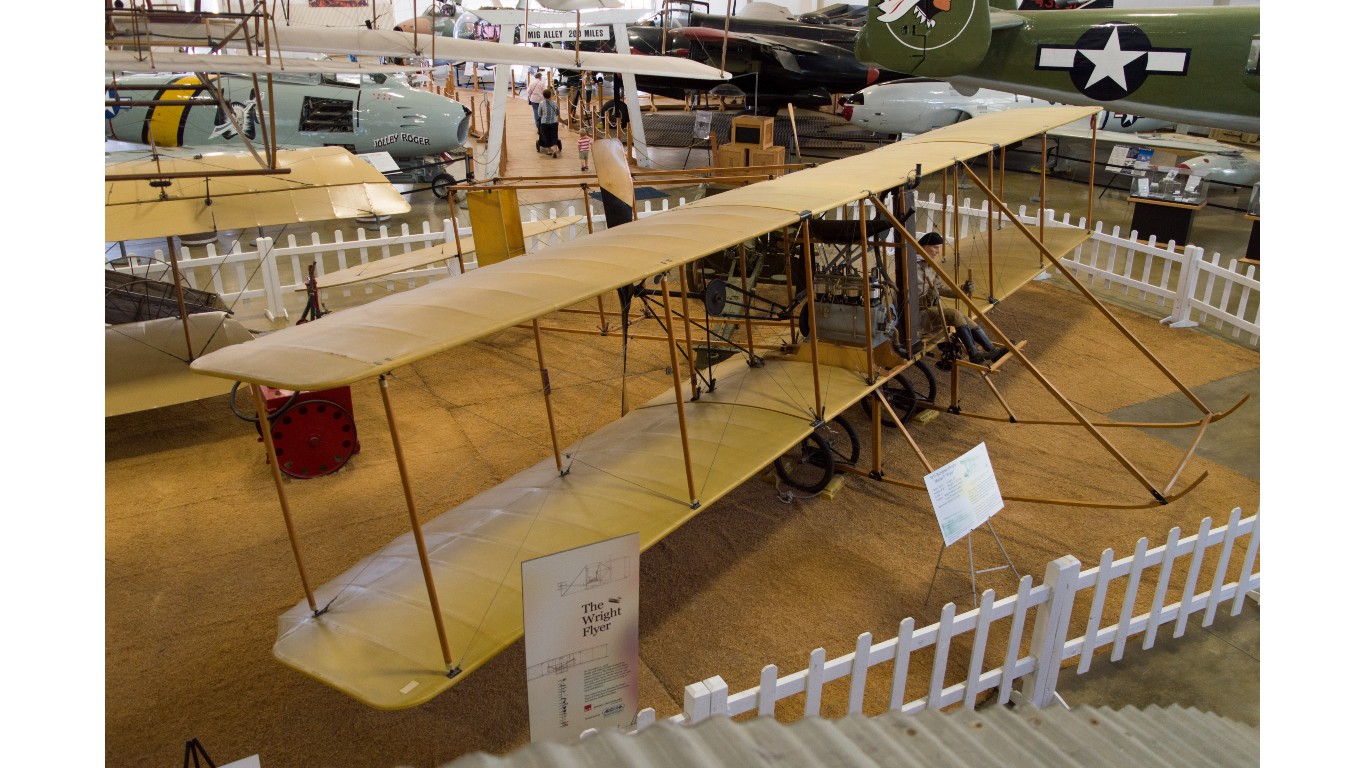
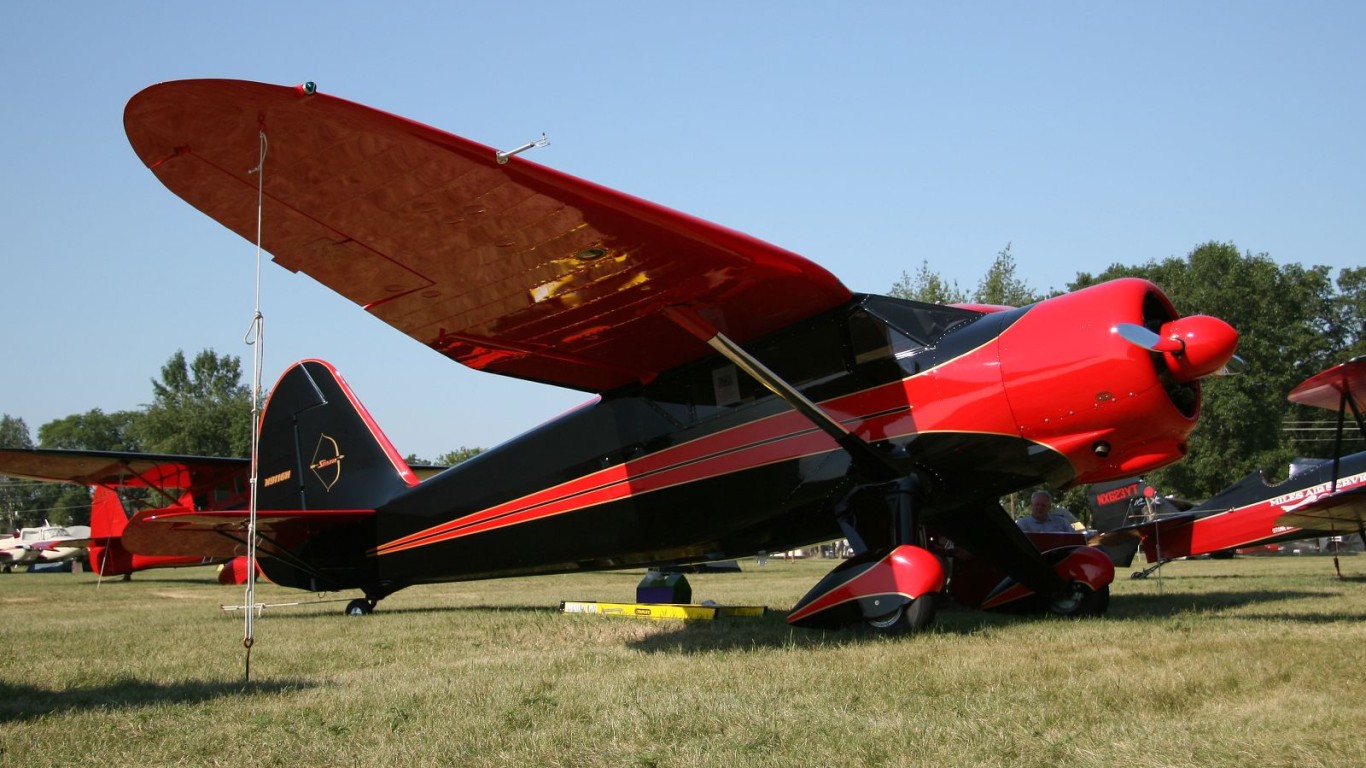
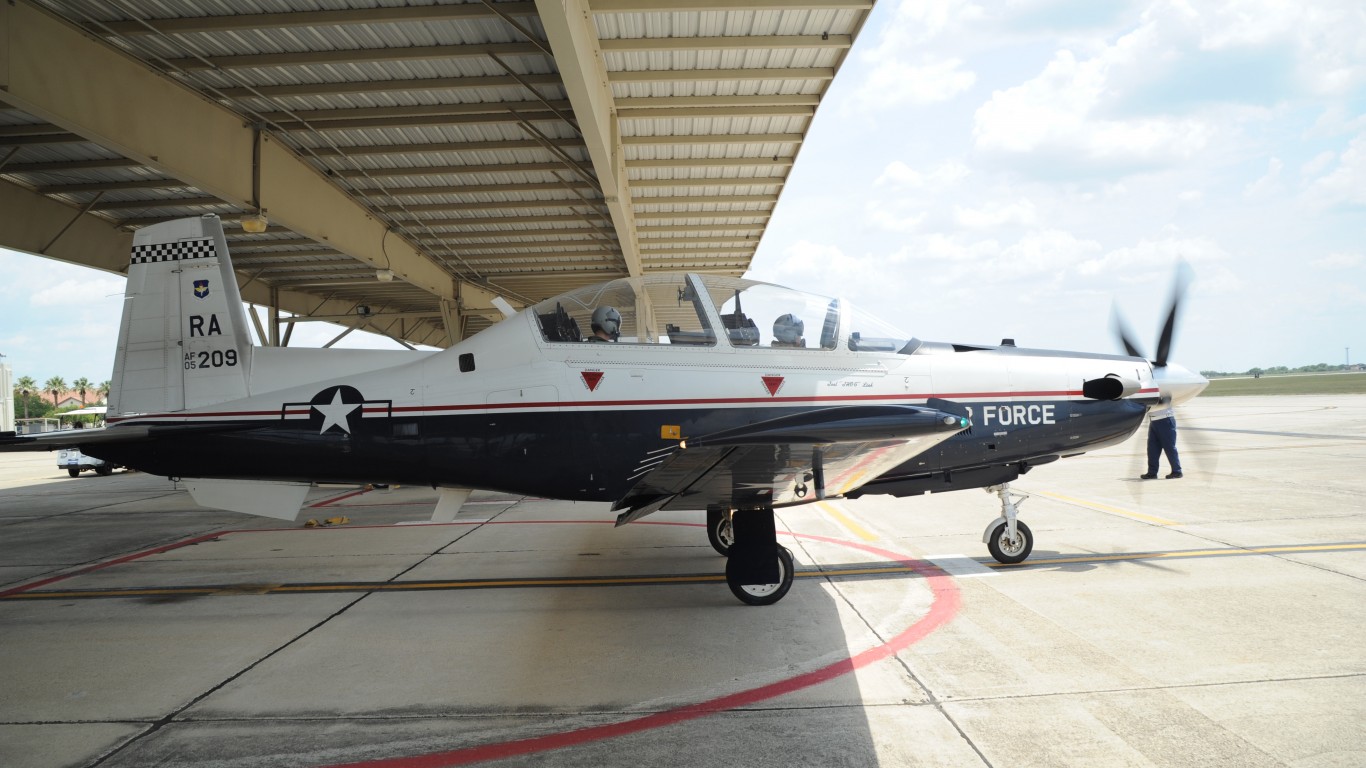
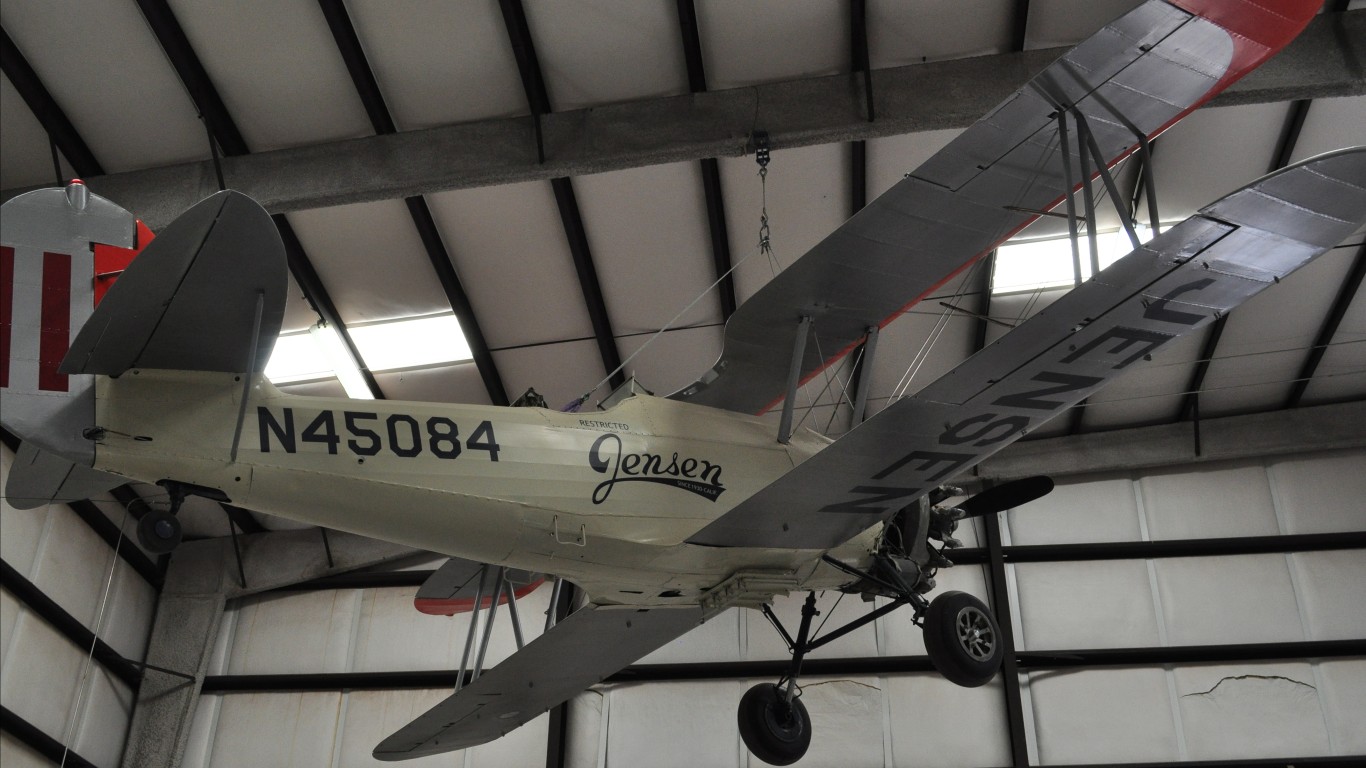
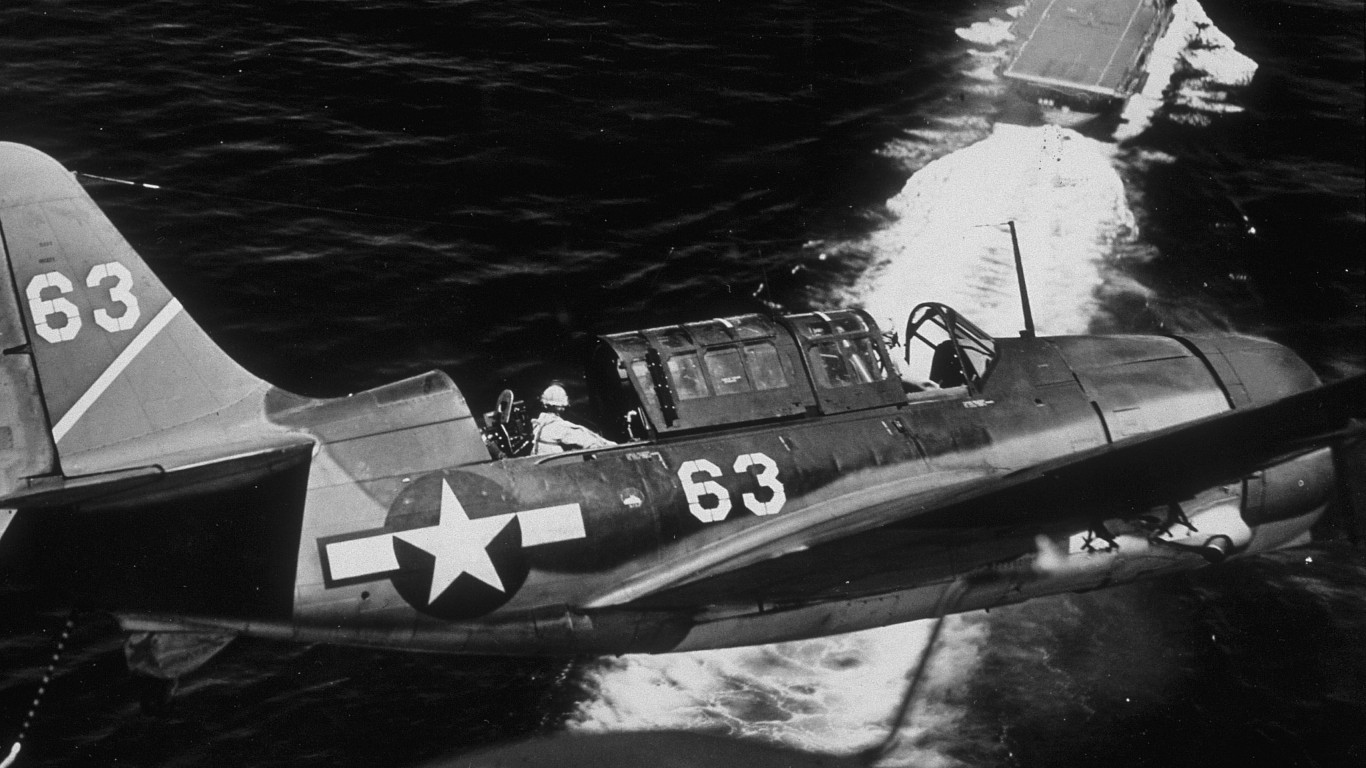 24/7 Wall St.
24/7 Wall St.
